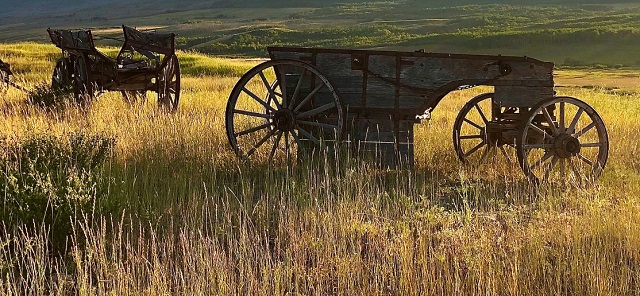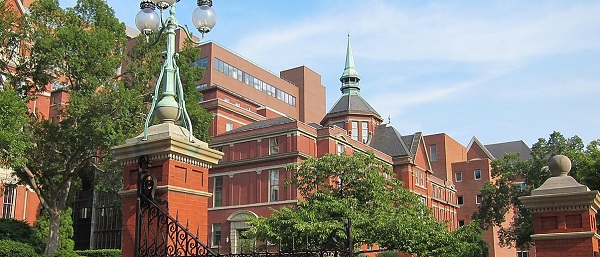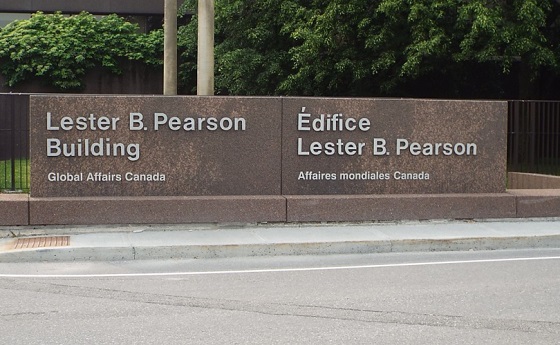Alberta
Fortis et Liber: Alberta’s Future in the Canadian Federation

From the C2C Journal
By Barry Cooper, professor of political science, University of Calgary
Canada’s western lands, wrote one prominent academic, became provinces “in the Roman sense” – acquired possessions that, once vanquished, were there to be exploited. Laurentian Canada regarded the hinterlands as existing primarily to serve the interests of the heartland. And the current holders of office in Ottawa often behave as if the Constitution’s federal-provincial distribution of powers is at best advisory, if it needs to be acknowledged at all. Reviewing this history, Barry Cooper places Alberta’s widely criticized Sovereignty Act in the context of the Prairie provinces’ long struggle for due constitutional recognition and the political equality of their citizens. Canada is a federation, notes Cooper. Provinces do have rights. Constitutions do mean something. And when they are no longer working, they can be changed.
Alberta
Federal budget: It’s not easy being green

From Resource Works
Canada’s climate rethink signals shift from green idealism to pragmatic prosperity.
Bill Gates raised some eyebrows last week – and probably the blood pressure of climate activists – when he published a memo calling for a “strategic pivot” on climate change.
In his memo, the Microsoft founder, whose philanthropy and impact investments have focused heavily on fighting climate change, argues that, while global warming is still a long-term threat to humanity, it’s not the only one.
There are other, more urgent challenges, like poverty and disease, that also need attention, he argues, and that the solution to climate change is technology and innovation, not unaffordable and unachievable near-term net zero policies.
“Unfortunately, the doomsday outlook is causing much of the climate community to focus too much on near-term emissions goals, and it’s diverting resources from the most effective things we should be doing to improve life in a warming world,” he writes.
Gates’ memo is timely, given that world leaders are currently gathered in Brazil for the COP30 climate summit. Canada may not be the only country reconsidering things like energy policy and near-term net zero targets, if only because they are unrealistic and unaffordable.
It could give some cover for Canadian COP30 delegates, who will be at Brazil summit at a time when Prime Minister Mark Carney is renegotiating his predecessor’s platinum climate action plan for a silver one – a plan that contains fewer carbon taxes and more fossil fuels.
It is telling that Carney is not at COP30 this week, but rather holding a summit with Alberta Premier Danielle Smith.
The federal budget handed down last week contains kernels of the Carney government’s new Climate Competitiveness Strategy. It places greater emphasis on industrial strategy, investment, energy and resource development, including critical minerals mining and LNG.
Despite his Davos credentials, Carney is clearly alive to the fact it’s a different ballgame now. Canada cannot afford a hyper-focus on net zero and the green economy. It’s going to need some high octane fuel – oil, natural gas and mining – to prime Canada’s stuttering economic engine.
The prosperity promised from the green economy has not quite lived up to its billing, as a recent Fraser Institute study reveals.
Spending and tax incentives totaling $150 billion over a decade by Ottawa, B.C, Ontario, Alberta and Quebec created a meagre 68,000 jobs, the report found.
“It’s simply not big enough to make a huge difference to the overall performance of the economy,” said Jock Finlayson, chief economist for the Independent Contractors and Business Association and co-author of the report.
“If they want to turn around what I would describe as a moribund Canadian economy…they’re not going to be successful if they focus on these clean, green industries because they’re just not big enough.”
There are tentative moves in the federal budget and Climate Competitiveness Strategy to recalibrate Canada’s climate action policies, though the strategy is still very much in draft form.
Carney’s budget acknowledges that the world has changed, thanks to deglobalization and trade strife with the U.S.
“Industrial policy, once seen as secondary to market forces, is returning to the forefront,” the budget states.
Last week’s budget signals a shift from regulations towards more investment-based measures.
These measures aim to “catalyse” $500 billion in investment over five years through “strengthened industrial carbon pricing, a streamlined regulatory environment and aggressive tax incentives.”
There is, as-yet, no commitment to improve the investment landscape for Alberta’s oil industry with the three reforms that Alberta has called for: scrapping Bill C-69, a looming oil and gas emissions cap and a West Coast oil tanker moratorium, which is needed if Alberta is to get a new oil pipeline to the West Coast.
“I do think, if the Carney government is serious about Canada’s role, potentially, as an global energy superpower, and trying to increase our exports of all types of energy to offshore markets, they’re going to have to revisit those three policy files,” Finlayson said.
Heather Exner-Pirot, director of energy, natural resources and environment at the Macdonald-Laurier Institute, said she thinks the emissions cap at least will be scrapped.
“The markets don’t lie,” she said, pointing to a post-budget boost to major Canadian energy stocks. “The energy index got a boost. The markets liked it. I don’t think the markets think there is going to be an emissions cap.”
Some key measures in the budget for unlocking investments in energy, mining and decarbonization include:
- incentives to leverage $1 trillion in investment over the next five years in nuclear and wind power, energy storage and grid infrastructure;
- an expansion of critical minerals eligible for a 30% clean technology manufacturing investment tax credit;
- $2 billion over five years to accelerate critical mineral production;
- tax credits for turquoise hydrogen (i.e. hydrogen made from natural gas through methane pyrolysis); and
- an extension of an investment tax credit for carbon capture utilization and storage through to 2035.
As for carbon taxes, the budget promises “strengthened industrial carbon pricing.”
This might suggest the government’s plan is to simply simply shift the burden for carbon pricing from the consumer entirely onto industry. If that’s the case, it could put Canadian resource industries at a disadvantage.
“How do we keep pushing up the carbon price — which means the price of energy — for these industries at a time when the United States has no carbon pricing at all?” Finlayson wonders.
Overall, Carney does seem to be moving in the right direction in terms of realigning Canada’s energy and climate policies.
“I think this version of a Liberal government is going to be more focused on investment and competitiveness and less focused around the virtue-signaling on climate change, even though Carney personally has a reputation as somebody who cares a lot about climate change,” Finlayson said.
“It’s an awkward dance for them. I think they are trying to set out a different direction relative to the Trudeau years, but they’re still trying to hold on to the Trudeau climate narrative.”
Pictured is Mark Carney at COP26 as UN Special Envoy on Climate Action and Finance. He is not at COP30 this week. UNRIC/Miranda Alexander-Webber
Resource Works News
Alberta
ChatGPT may explain why gap between report card grades and standardized test scores is getting bigger

From the Fraser Institute
By Paige MacPherson and Max Shang
In Alberta, the gap between report card grades and test/exam scores increased sharply in 2022—the same year ChatGPT came out.
Report card grades and standardized test scores should rise and fall together, since they measure the same group of students on the same subjects. But in Alberta high schools, report card grades are rising while scores on Provincial Achievement Tests (PAT) and diploma exams are not.
Which raises the obvious question—why?
Report card grades partly reflect student performance in take-home assignments. Standardized tests and diploma exams, however, quiz students on their knowledge and skills in a supervised environment. In Alberta, the gap between report card grades and test/exam scores increased sharply in 2022—the same year ChatGPT came out. And polling shows Canadian students now rely heavily on ChatGPT (and other AI platforms).
Here’s what the data show.
In Alberta, between 2016 and 2019 (the latest year of available comparable data), the average standardized test score covering math, science, social study, biology, chemistry, physics, English and French language arts was just 64, while the report card grade 73.3—or 14.5 per cent higher. Data for 2020 and 2021 are unavailable due to COVID-19 school closures, but between 2022 and 2024, the gap widened to 20 per cent. This trend holds regardless of school type, course or whether the student was male or female. Across the board, since 2022, students in Alberta high schools are performing significantly better in report card grades than on standardized tests.
Which takes us back to AI. According to a recent KPMG poll, 73 per cent of students in Canada (high school, vocational school, college and university) said they use generative AI in their schoolwork, an increase from the previous year. And 71 per cent say their grades improved after using generative AI.
If AI is simply used to aid student research, that’s one thing. But more than two-thirds (66 per cent) of those using generative AI said that although their grades increased, they don’t think they’re learning or retaining as much knowledge. Another 48 per cent say their “critical thinking” skills have deteriorated since they started using AI.
Acquiring knowledge is the foundation of higher-order thinking and critical analysis. We’re doing students a deep disservice if we don’t ensure they expand their knowledge while in school. And if teachers award grades, which are essentially inflated by AI usage at home, they set students up for failure. It’s the academic equivalent of a ski coach looking at a beginner and saying, “You’re ready for the black diamond run.” That coach would be fired. Awarding AI-inflated grades is not fair to students who will later struggle in college, the workplace or life beyond school.
Finally, the increasing popularity of AI underscores the importance of standardized testing and diploma exams. And parents knew this even before the AI wave. A 2022 Leger poll found 95 per cent of Canadian parents with kids in K-12 schools believe it’s important to know their child’s academic performance in the core subjects by a fair and objective measure. Further, 84 per cent of parents support standardized testing, specifically, to understand how their children are doing in reading, writing and mathematics. Alberta is one of the only provinces to administer standardized testing and diploma exams every year.
Clearly, parents should oppose any attempt to reduce accountability and objective testing in Alberta schools.
-

 International2 days ago
International2 days agoIs America drifting toward civil war? Joe Rogan thinks so
-

 COVID-192 days ago
COVID-192 days agoMajor new studies link COVID shots to kidney disease, respiratory problems
-

 Alberta24 hours ago
Alberta24 hours agoChatGPT may explain why gap between report card grades and standardized test scores is getting bigger
-

 Fraser Institute1 day ago
Fraser Institute1 day agoCourts and governments caused B.C.’s property crisis—they’re not about to fix it
-

 Censorship Industrial Complex2 days ago
Censorship Industrial Complex2 days agoEU’s “Democracy Shield” Centralizes Control Over Online Speech
-

 Alberta14 hours ago
Alberta14 hours agoFederal budget: It’s not easy being green
-

 International2 days ago
International2 days agoUS announces Operation Southern Spear, targeting narco-terrorists
-

 Education22 hours ago
Education22 hours agoJohns Hopkins University Announces Free Tuition For Most Students
 For 200 years Rupert’s Land (its flag shown on top left) along with the Northwest and Northeast Territories were the exclusive commercial domain of the Hudson’s Bay Company (HBC), granted by the British Crown; Great Britian officially transferred these vast lands to the Crown in Right of Canada in 1870. (Source of map:
For 200 years Rupert’s Land (its flag shown on top left) along with the Northwest and Northeast Territories were the exclusive commercial domain of the Hudson’s Bay Company (HBC), granted by the British Crown; Great Britian officially transferred these vast lands to the Crown in Right of Canada in 1870. (Source of map:  Obscure but legally important: Canada is often said to have “purchased” Rupert’s Land from the Hudson’s Bay Company, but Canada did not actually pay for the land, only for the company’s capital improvements such as Lower Fort Garry in the Rural Municipality of St. Andrews (aka the Stone Fort, top), Fort Edmonton (middle), depicted here after construction of Alberta’s Legislative Assembly building, and the Hudson’s Bay Brigade Trail (bottom). (Sources of images: (top)
Obscure but legally important: Canada is often said to have “purchased” Rupert’s Land from the Hudson’s Bay Company, but Canada did not actually pay for the land, only for the company’s capital improvements such as Lower Fort Garry in the Rural Municipality of St. Andrews (aka the Stone Fort, top), Fort Edmonton (middle), depicted here after construction of Alberta’s Legislative Assembly building, and the Hudson’s Bay Brigade Trail (bottom). (Sources of images: (top)  “Enter the Union on an equal basis with existing states”: In contrast to Canada, the U.S. Northwest Ordinance of 1787 provided a formal and transparent mechanism by which newly settled territories could graduate to statehood if they met certain conditions – gaining the same rights and privileges as the original 13 states.
“Enter the Union on an equal basis with existing states”: In contrast to Canada, the U.S. Northwest Ordinance of 1787 provided a formal and transparent mechanism by which newly settled territories could graduate to statehood if they met certain conditions – gaining the same rights and privileges as the original 13 states. “Our lives our fortunes and our sacred honour”: Métis leaders Louis Riel (top left) and John Bruce (top right) saw the 1870 transfer of Rubert’s Land to Canada as an act of “abandonment” by the British Crown; to protect the interests of the Red River Settlement (bottom), they “refus[ed] to recognise the authority of Canada.” (Sources: (top left photo) Library and Archives Canada, C-018082; (top right photo)
“Our lives our fortunes and our sacred honour”: Métis leaders Louis Riel (top left) and John Bruce (top right) saw the 1870 transfer of Rubert’s Land to Canada as an act of “abandonment” by the British Crown; to protect the interests of the Red River Settlement (bottom), they “refus[ed] to recognise the authority of Canada.” (Sources: (top left photo) Library and Archives Canada, C-018082; (top right photo)  “Provinces in the Roman sense”: According to political scientist James Mallory, Canada’s Prairie provinces were akin to “provinciae” in ancient Rome – conquered lands whose inhabitants were not citizens and who existed to serve the interests of the Imperial Capital and the Italian heartland. Shown, the fall of Macedonia in 168 BC depicted in The Triumph of Aemilius Paulus by Carle Vernet, 1789. (Source of painting:
“Provinces in the Roman sense”: According to political scientist James Mallory, Canada’s Prairie provinces were akin to “provinciae” in ancient Rome – conquered lands whose inhabitants were not citizens and who existed to serve the interests of the Imperial Capital and the Italian heartland. Shown, the fall of Macedonia in 168 BC depicted in The Triumph of Aemilius Paulus by Carle Vernet, 1789. (Source of painting:  In 1905 the Dominion of Canada carved the new provinces of Alberta and Saskatchewan out of portions of the Northwest Territories; the newcomers were treated as distinctly second-class in comparison to the original provinces, among other things only gaining full control over their lands and natural resources in 1930. (Sources of photos (clockwise, starting top-left):
In 1905 the Dominion of Canada carved the new provinces of Alberta and Saskatchewan out of portions of the Northwest Territories; the newcomers were treated as distinctly second-class in comparison to the original provinces, among other things only gaining full control over their lands and natural resources in 1930. (Sources of photos (clockwise, starting top-left):  The Prairie provinces continued to be subjected to destructive Laurentian policies throughout the 20th century, such as prolongation of the Canadian Wheat Board, official bilingualism and the National Energy Program, implemented by Pierre Trudeau in 1981 (shown on bottom left, to the right of Alberta premier Peter Lougheed in the centre). Depicted on bottom right, oil sands facility at Mildred Lake. (Sources of photos: (top left) Canadian Government Motion Picture Bureau/Library and Archives Canada/C-064834; (bottom left) The Canadian Press/Dave Buston; (bottom right)
The Prairie provinces continued to be subjected to destructive Laurentian policies throughout the 20th century, such as prolongation of the Canadian Wheat Board, official bilingualism and the National Energy Program, implemented by Pierre Trudeau in 1981 (shown on bottom left, to the right of Alberta premier Peter Lougheed in the centre). Depicted on bottom right, oil sands facility at Mildred Lake. (Sources of photos: (top left) Canadian Government Motion Picture Bureau/Library and Archives Canada/C-064834; (bottom left) The Canadian Press/Dave Buston; (bottom right)  “It’s not like Ottawa is a national government”: The Alberta Sovereignty within a United Canada Act, passed in late 2022 by the UCP government of Premier Danielle Smith, pictured, aims to strengthen the province’s ability to limit unconstitutional intrusions of federal policy and law into areas of provincial jurisdiction, thereby reaffirming that Canada is a federal state. (Source of photo: The Canadian Press/Jason Franson)
“It’s not like Ottawa is a national government”: The Alberta Sovereignty within a United Canada Act, passed in late 2022 by the UCP government of Premier Danielle Smith, pictured, aims to strengthen the province’s ability to limit unconstitutional intrusions of federal policy and law into areas of provincial jurisdiction, thereby reaffirming that Canada is a federal state. (Source of photo: The Canadian Press/Jason Franson) Although attacked by critics, Alberta’s Sovereignty Act has received strong popular support for challenging the Justin Trudeau government’s constant intrusions into areas of provincial constitutional jurisdiction; the author points out that the Constitution does not require provinces to enforce federal laws, and that the Supreme Court of Canada has confirmed this. Shown, supporters of the Sovereignty Act outside the Alberta legislature, December 2022. (Source of photo:
Although attacked by critics, Alberta’s Sovereignty Act has received strong popular support for challenging the Justin Trudeau government’s constant intrusions into areas of provincial constitutional jurisdiction; the author points out that the Constitution does not require provinces to enforce federal laws, and that the Supreme Court of Canada has confirmed this. Shown, supporters of the Sovereignty Act outside the Alberta legislature, December 2022. (Source of photo:  “Clear majority on a clear question”: Two years after the 1998 Quebec Secession Reference case before the Supreme Court of Canada, the Liberal government of Jean Chrétien (on bottom, leaning forward) introduced the Clarity Act, establishing the conditions under which Canadian provinces may be allowed to begin the process of secession. The author considers this another act violating the concept of federalism, with Ottawa unilaterally calling the shots and placing provinces in a subordinate position. (Sources of photos: (top)
“Clear majority on a clear question”: Two years after the 1998 Quebec Secession Reference case before the Supreme Court of Canada, the Liberal government of Jean Chrétien (on bottom, leaning forward) introduced the Clarity Act, establishing the conditions under which Canadian provinces may be allowed to begin the process of secession. The author considers this another act violating the concept of federalism, with Ottawa unilaterally calling the shots and placing provinces in a subordinate position. (Sources of photos: (top) 





